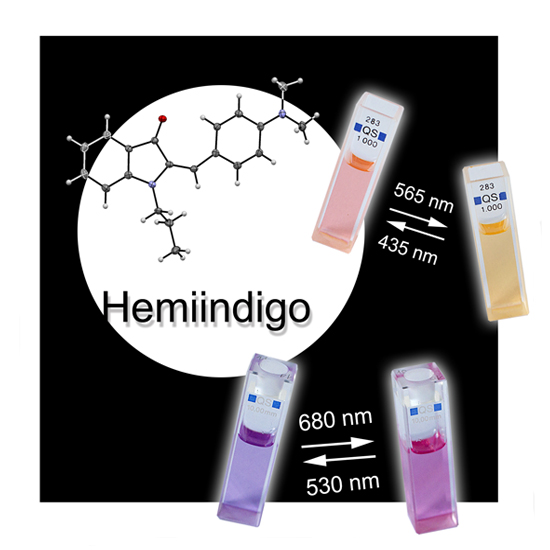Hemiindigo: Highly Bistable Photoswitching at the Biooptical Window
25-Sep-2017
J. Am. Chem. Soc., 139 (42), pp 15060–15067, DOI: 10.1021/jacs.7b07531
J. Am. Chem. Soc., online article
Hemiindigo is a long known chromophore that absorbs in the blue part of the spectrum but has almost completely been ignored as potential photoswitch. Herein we show how the absorption of hemiindigo is shifted to the red part of the visible spectrum and how nearly perfect photoswitching can be achieved using blue or green and red light. Five derivatives were investigated giving very high isomeric yields in both switching directions, i.e. >90% E isomer after irradiation with 470 to 530 nm light and 99% Z isomer with 590 up to 680 nm light. At the same time the thermal bistability is extraordinarily high leading to half-lives of the pure isomeric states of up to 83 years at 25 °C. The herein developed photoswitches show photochromism in the visible enabling the two isomeric states to be distinguished by the naked eye. Substituted hemiindigos therefore constitute extremely promising new photoswitches with excellent properties for applications in biology, chemistry, or material sciences.











